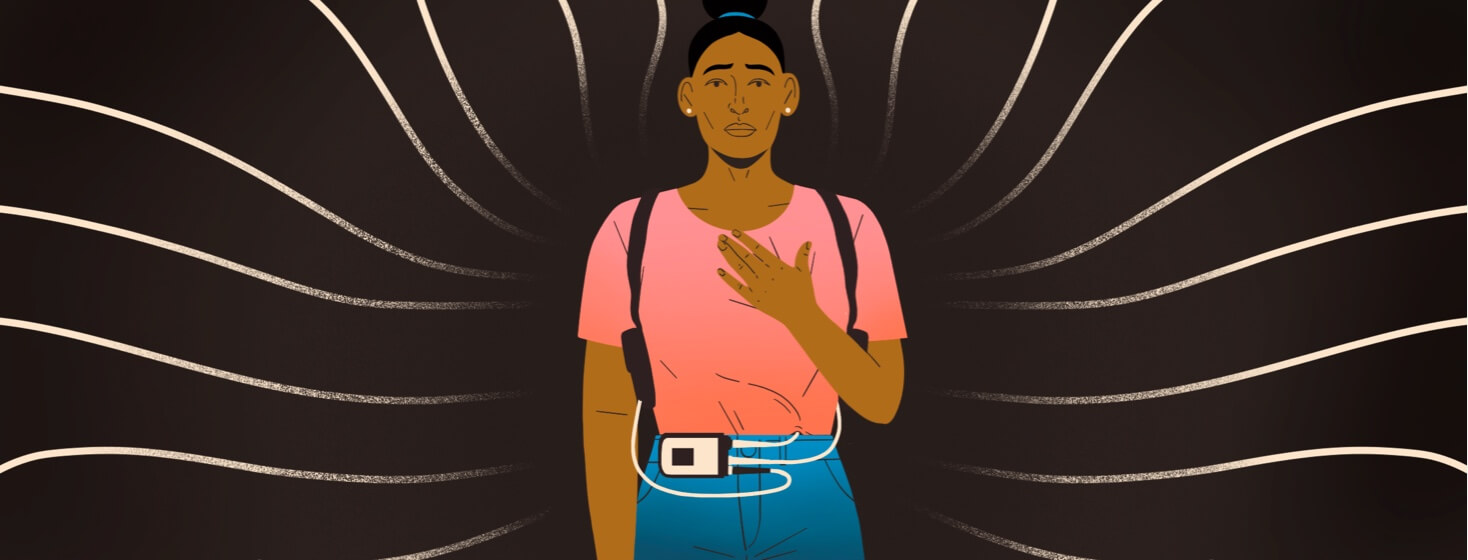Living With Advanced Heart Failure Part 2
I was diagnosed with dilated cardiomyopathy which later turned into advanced heart failure. After having gone through surgery for a Left Ventricular Assist Device (LVAD), my life seemed like it was over. I got the LVAD about a month into my 30s. An LVAD is a mechanical device that pumps your left ventricle when it can longer pump. If you are confused don’t worry, I was too at first. Before I got the LVAD, the doctors had someone from the team come and give us a class on it. The whole time I had no idea what I was getting myself into. There was so much information about the device that it came with a book and a binder full of notes.
After LVAD surgery
Because I had previously had a stroke beforehand and my heart was so weak, I was not allowed to get up and walk. After LVAD surgery, the real work began. Learning to walk, talk, and swallow all over again would become the task of a lifetime. After spending 2 months in the hospital, I was finally discharged to go home on February 1st. What’s amazing and significant about the date February 1st, is that it was also the day I got called for a heart transplant a year later. Life was about to be so different for me. No more showers, ease of travel, and no more sleeping in peace.
LVADs are hard to explain unless you are actually seeing it being presented to you or if you’ve had one. The motor device is attached to your heart and it is a white cord called the driveline comes out of the stomach, and then there are batteries the driveline is attached to. The LVAD needs 2 batteries in order to work and I also had a backup bag with batteries that had to be carried with me at all times. So, the 2 batteries I kept in a fanny pack.
Changes in routine
The LVAD itself can’t be immersed in water so, you had to take extra precautions to keep it dry when bathing. There is a dressing right where the cord comes out of the stomach that has to be changed every other day. Infections are prevalent with the driveline, although I never had issues with infections, plenty of my friends with LVADs have.
Mental and physical changes
I lost 30 pounds while I was in the hospital and I was virtually and physically malnourished. When I returned home, I had a nurse coming 3 times a week, and different therapists coming to the house. A physical therapist, an occupational therapist, and a speech therapist were also coming. I did not realize the mental part of advanced heart failure would be so hard to get through. There I was looking like a twig because I was so skinny and bony.
Being a woman, it's hard to see yourself not looking like a woman all of the parts of you that make you a woman seem to just go away. I lost all my confidence because I couldn’t speak and there were so many things that I used to do that I couldn’t do anymore. I was fighting inner demons of self-esteem issues and social anxiety to name a few. And to make matters worse, I had this LVAD attached to me. Not many people are familiar with the LVAD, so having to explain it to people was the hardest. The worst part came when there were metal detectors and I would have to explain to the staff that I couldn’t go into them. I had an ICD as well as an LVAD inside of me. They would ask to see the device in front of everyone, I would lift up my shirt up to the driveline so they could see it.
Accepting my new life with advanced heart failure
It wasn’t until the end of the year that I finally started accepting and becoming more comfortable in my new life. The LVAD is a life-saving device and without it, I wouldn’t have survived another year. I got the LVAD in January 2019 and in September, I started to do the testing required to get on a heart transplant list. The tests included a mammogram, echocardiogram, bone density exam, right heart catheterization, chest X-ray, and lots of tubes of blood. Also, psychological testing was required because they have to know where your mindset is and if you will be able to handle everything that having a heart transplant requires.
My mom and I also spoke to the surgeon as part of the screening process. He told us since I was doing so well with the LVAD, that it would probably be 2 to 3 years before I actually got a heart. He was right about one thing, I was doing well with the LVAD, and I finally started accepting my life as it was. Everything was going so well that I wasn’t expecting what happened next to happen so soon.

Join the conversation